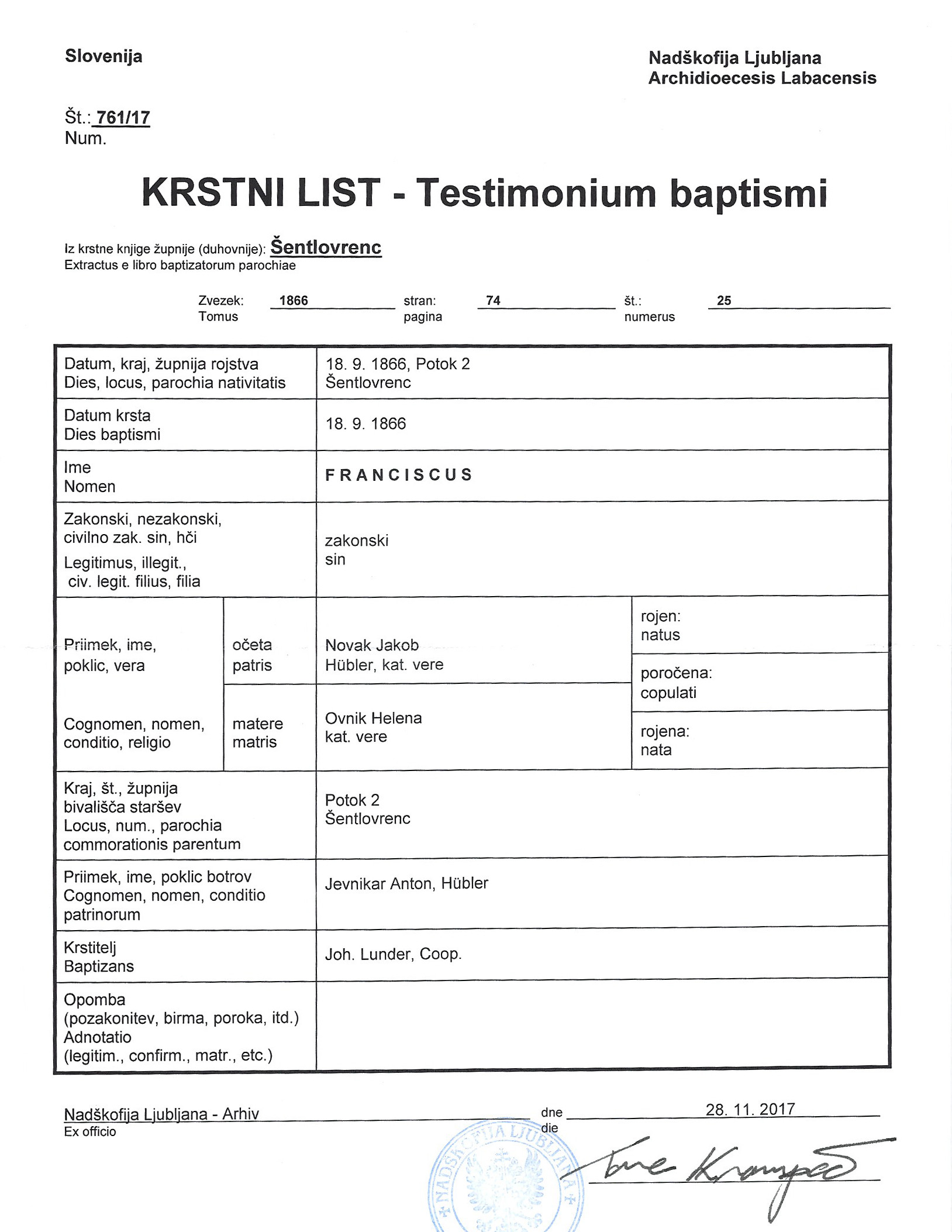In the Diocese of Gurk just adjacent (north) to the Diocese of Ljubljana it was also quite common that newborns were baptized on the same day from what I saw when looking at the church records there. When birth and baptism hours were clearly indicated it showed that often baptism happened within 12 hours after birth (e.g. born after midnight and baptized in the morning or early afternoon). It was customary that the midwife brought the baby to the church so the mother wasn't involved in the process.
I also share the view of @JPmiaou that it was that customary to happen on the same day that both dates often weren't even indicated in the records. However, I wanted to go a bit beyond reports from experience and show a few numbers from my own research. In the diagram below you find the mean timespan between birth and baptism of 190 individuals in the 17th, 18th, 19th and 20th century in the Diocese of Gurk (Carinthia, Austria). Since most parishes are from Upper Carinthia this is in no way representative for the whole dicoese. Don't attribute too much to the mean as only few individuals share the same birth year.
It is important to differentiate between calendar days and difference in hours. Even when baptism might have happened on the next calendar day after birth when taking into account the time of birth mostly baptism happened within the first 24 hours after birth. For individuals baptized on the same calendar day I only selected those where I was certain about it. I obtained this certainty either because it was clearly noted in the record or if one of birth or baptism date was omitted I found a clear remark in nearby records when birth and baptism weren't on the same day.
I had to use a little trick to show mean values of 0 in the bar plot so I assigned values of 0.05 to them.

Maybe a more useful information according to the question is also which percentage of the above described individuals was baptized on the 0, 1, ... day after birth. The following diagram shows that.



